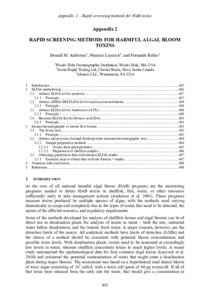Appendix 2. Rapid screening methods for Harmful Algal Blooms toxins.

View/
Average rating
votes
Date
2017Author
Anderson, Donald M.
Laycock, Maurice
Rubio, Fernando
Status
Published
Metadata
Show full item recordAbstract
At the core of all national harmful algal bloom (HAB) programs are the monitoring
programs needed to detect HAB toxins in shellfish, fish, water, or other resources
sufficiently early to take management actions (Anderson et al. 2001). These programs
measure toxins produced by multiple species of algae, with the methods used varying
dramatically in scope and complexity due to the types of toxins that need to be detected, the
nature of the affected resource, and regulatory requirements.
Some of the methods developed for analysis of shellfish tissues and algal blooms can be of
direct use in desalination plants for analysis of toxins in water – both the raw, untreated
water before desalination, and the treated, fresh water. A major concern, however, are the
detection limits of the assays. All analytical methods have limits of detection (LODs) and
the choice of a method should be consistent with potential bloom concentrations and possible toxin levels. With desalination plants, to.....
Title of Report
Harmful Algal Blooms (HABs) and Desalination: a Guide to Impacts, Monitoring and Management.Editor(s) of Report
Anderson, D.M.Boerlage, S.F.E.
Dixon, M.B.
Page Range
pp.485-500Publisher
Intergovernmental Oceanographic Commission of UNESCOParis, France
Series;Nr
Intergovernmental Oceanographic Commission Manuals and Guides;78Document Language
enBest Practice Type
ManualCitation
Anderson, D.M.; Laycock, M. and Rubio, F. (2017) Appendix 2. Rapid screening methods for Harmful Algal Bloom toxins. In: Harmful Algal Blooms (HABs) and Desalination: A Guide to Impacts, Monitoring and Management. (eds. Anderson D. M.; Boerlage, S. F. E. and Dixon, M.B.) Paris, France, Intergovernmental Oceanographic Commission of UNESCO, pp.485-500. (IOC Manuals and Guides No. 78). DOI: http://dx.doi.org/10.25607/OBP-363Collections
 Repository of community practices in Ocean Research, Applications and Data/Information Management
Repository of community practices in Ocean Research, Applications and Data/Information Management